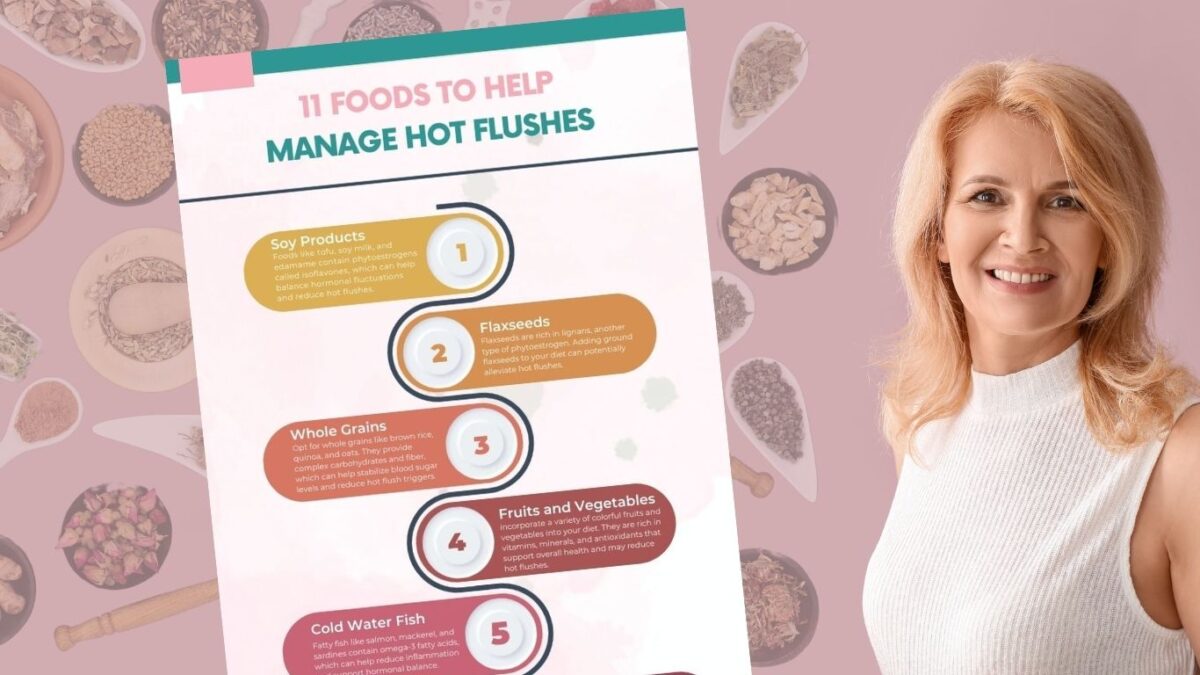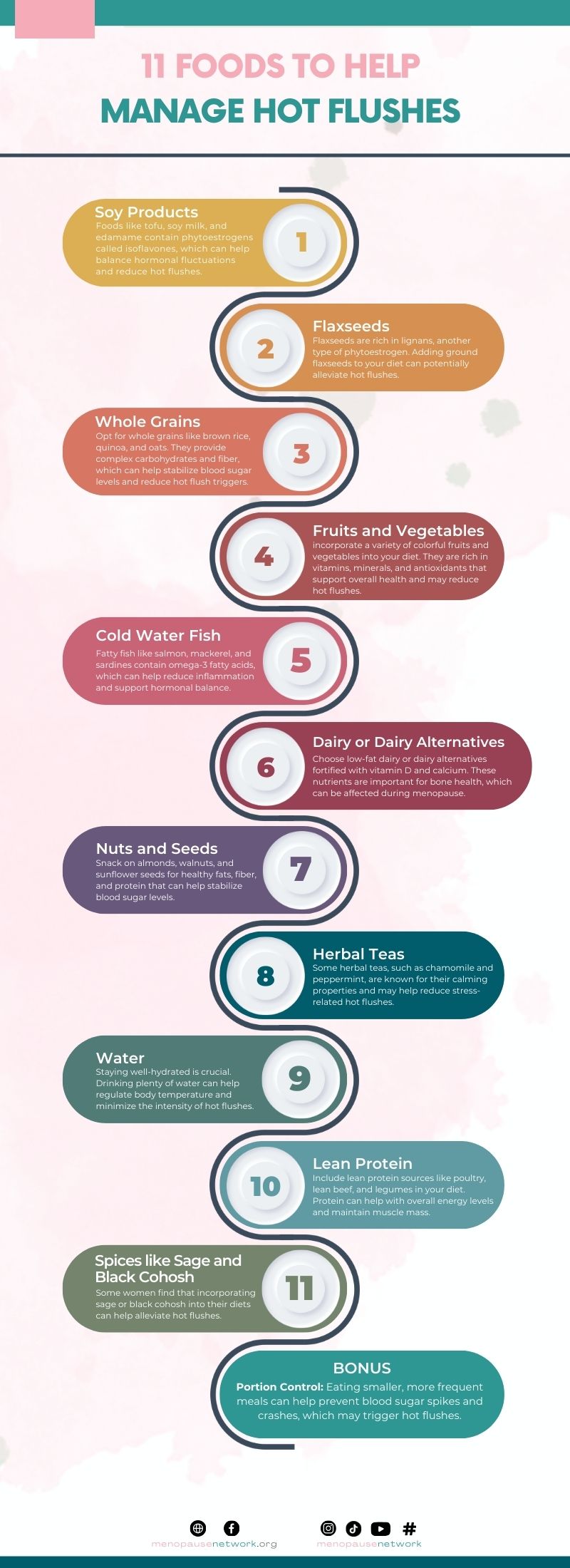Practical Guide to Beating Hot Flashes: Foods You Should Eat and Avoid
Hot flashes are a common part of menopause, typically starting in your late 40s to early 50s. They can vary in how often they happen and how intense they are. Some women have them only during menopause, while others might continue to experience them afterward (or during perimenopause). Generally, they become less severe over time.
What Do Hot Flashes Feel Like?
Hot flashes feel like a sudden rush of heat spreading through your body. You might get red and sweaty, and then feel chilled afterward. The experience can be different for everyone, ranging from mild to quite intense.
Common Triggers of Hot Flashes
Many things can set off hot flashes, such as:
- Hot weather
- Heat
- Smoking
- Caffeine
- Alcohol
- Spicy foods
- Tight clothing
- Stress
Avoiding these triggers can help reduce the number of hot flashes you experience.
Foods That Can Trigger Hot Flashes
Certain foods can make hot flashes worse. Here are some common culprits:
- Spicy Foods: These can raise your body temperature, leading to hot flashes.
- Caffeine: Found in coffee, tea, and some sodas, caffeine can stimulate your nervous system and trigger hot flashes.
- Alcohol: Drinking alcohol can dilate your blood vessels, increasing your body temperature and causing hot flashes.
How to Avoid Food-Triggered Hot Flashes
1. Limit Spicy Foods
Try to avoid heavily spiced dishes. Use milder seasonings and herbs to flavor your food instead.
2. Cut Down on Caffeine
Reduce your intake of caffeinated drinks. Opt for decaf options or herbal teas to help keep hot flashes at bay.
3. Moderate Alcohol Consumption
Limit how much alcohol you drink, especially if you notice it triggers hot flashes. If you do drink, choose lighter options and stay hydrated by drinking plenty of water.
Foods That Help Ease Hot Flashes and Night Sweats
Adding certain foods to your diet can help manage hot flashes and night sweats. These foods contain phytoestrogens, which are plant-based compounds that mimic estrogen in your body.
1. Soy Products
Soybeans and soy-based foods like tofu, tempeh, and soy milk are rich in isoflavones, which can help reduce hot flashes.
2. Flaxseed
Flaxseed is another great source of phytoestrogens. You can add ground flaxseed to smoothies, yogurt, or baked goods.
3. Legumes
Chickpeas, lentils, and beans are good sources of phytoestrogens and can be easily added to salads, soups, and stews.
4. Whole Grains
Whole grains like oats, barley, and brown rice can help stabilize your blood sugar levels, which can reduce hot flashes.
5. Fruits and Vegetables
Fruits and vegetables, especially those high in antioxidants, can help reduce inflammation and oxidative stress, which may help lessen hot flashes. Berries, leafy greens, and cruciferous vegetables like broccoli and cauliflower are especially helpful.
Managing Heat and Hot Flashes
Besides watching what you eat, managing your environment can also help prevent hot flashes:
- Stay Cool: Dress in layers so you can easily adjust your clothing to stay comfortable.
- Control Your Environment: Use fans or air conditioning to keep your home cool.
- Exercise Wisely: Work out in cooler environments to avoid overheating, which can trigger hot flashes.
Treatments for Hot Flashes
If lifestyle changes aren’t enough, talk to your healthcare provider about other treatment options. These can include prescription medications, hormone replacement therapy, or over-the-counter remedies. Always consult your provider to find the safest and most effective treatment for you.
Takeaway
Managing hot flashes often requires a mix of dietary changes and lifestyle adjustments. By avoiding certain foods and keeping cool, you can reduce the frequency and severity of hot flashes. Adding foods that help ease hot flashes and night sweats can also make a big difference. And remember, your healthcare provider can offer personalized advice and treatment options tailored to your needs.





